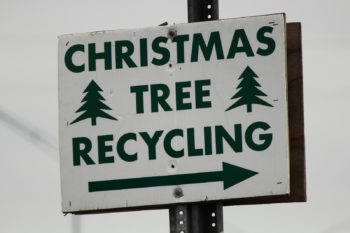Care for & Restore
Welcome to the Care for & Restore page where you'll find actions we have taken and will take to care for our ecosystems, and restore equity and faith in environmental protection.

Local Areas of Restoration
Can we repair the damage to our local ecosystems and biodiversity? Find out how programs within the County of San Diego and our external partners are restoring our earth!
San Diego County Watershed Protection Program
The County of San Diego Watershed Protection Program (WPP) helps to ensure that our waterways are protected by preventing pollutants from entering the County’s storm drain system. WPP conducts outreach, inspection and complaint investigations for commercial, industrial, and residential properties in the unincorporated portions of the County to reduce pollutants from entering streets and storm drains. With your help, we can keep our waterways clean!
San Diego River Park Foundation
The San Diego River Park Foundation is dedicated to improving the health of the San Diego River and creating a better quality of life for our community through the creation of a 52 mile river-long park system. The San Diego River’s ecological, cultural and recreational resources must be maintained for future generations through long-term conservation of the land, water, and wildlife. Volunteer or attend a San Diego River Park Foundation clean-up or event by visiting sandiegoriver.org.

The County has jurisdiction over the unincorporated areas within the county which are generally east and north of the City of San Diego, noted in dark grey on the map. Unincorporated lands are biologically rich and diverse and are comprised of natural features that include lagoons, foothills, mountain ranges, and deserts. Large federal, state and regional parklands cover much of the eastern portion of the county.
The County of San Diego is committed to helping communities thrive while protecting the region’s unique and diverse natural resources. One of the County’s sustainability tools is its Climate Action Plan (CAP), which contains a series of measures to reduce greenhouse gas emissions over the next 30 years.
The overall objective of the CAP Update is to reduce greenhouse gas (GHG) emissions generated from activities within the unincorporated county and GHG emissions generated by County facilities and operational activities throughout the county, including facilities and operations located within incorporated cities (County operations), to meet or exceed GHG reduction goals under State laws. Visit the CAP Dashboard to see our progress toward creating a more sustainable and equitable Earth!
What is Environmental Justice?
“Environmental Justice” is defined as the fair treatment of people of all races, cultures, and incomes with respect to the development, adoption, implementation, and enforcement of environmental laws, regulations, and policies (CA Government Code Section 65040.12).
The County created a standalone Environmental Justice Element to create goals and policies that address the health effects caused by the built environment. This Element will serve as a guide for reducing pollution in Environmental Justice Communities.
What is being done to address environmental
justice in San Diego County?
The County Created an Environmental Justice Section in its General
Plan
Low-income communities and communities of color often bear a
disproportionate burden of pollution and associated health risks based
on legacy decisions that place industrial or polluting uses next to
these communities. Environmental Justice seeks to correct these
inequities by reducing the pollution experienced by these communities
and ensuring their input is considered in decisions that affect
them.
These are the unincorporated communities identified as Environmental Justice Communities under the developing Environmental Justice Element

San Diego County’s Department of Environmental Health & Quality (DEHQ) has developed the fastest standard water quality test approved by the state. In addition to speeding up the process, DEHQ has expanded its testing locations – doubling the number of testing locations in South County - between Coronado and Tijuana – and increased the testing during the winter, when the risk of sewage-contaminated Tijuana River flows is higher due to rains.
Reducing Tijuana River Valley Sewage

In 2023, the County Board of Supervisors Declared a Countywide Local Emergency realted to the sewage crisis involving the TJ River and South County coastal communities and asked the Governor of the State of California to Proclaim a State of Emergency. Since then the local Congressional delegation, the governor and local cities have called for federal funding to fix the problem and urged immediate federal attention and resources for the environmental and public health crisis.

















